Toyota's Self-driving Car Plan Still Incorporates the Driver, Calls Bullshit on Level 5 Autonomy

Despite being one of the largest manufacturing giants currently in existence, Toyota is trailing in the autonomous technology war currently raging among carmakers. But it would unfair to say that the Japanese brand is losing. While General Motors appears to lead the rest of the established automotive firms, it’s not perfectly clear how big a gap it made for itself. Meanwhile, Toyota spent the last few years taking a more cautious approach, without ever ignoring the possibility of an autonomous future.
In 2015, the automaker decided to get serious, saying it would invest billions of dollars into the Toyota Research Institute. The goal? To advance robotics and artificial intelligence to a level where it could test an autonomous vehicle by 2020. But Toyota remains skeptical of the rest of the industry’s progress on self-driving cars.
“I need to make it perfectly clear, it’s a wonderful, wonderful goal,” Gill Pratt, the CEO of the Toyota Research Institute said at CES 2017. “But none of us in the automobile or IT industries are close to achieving true Level 5 autonomy, we are not even close.”
Toyota thinks that while several manufacturers appear to be on the cusp of Level 4 self-driving capability, total autonomy remains a distant speck on the horizon.
The company currently has a number of Lexus-based vehicles it uses to test new hardware and software. By all accounts, those units are making a lot of headway in a short period of time, but aren’t on par with the best the rest of the industry. It also created the e-Palette concept this year — an autonomous, modular box that Toyota wants to build by 2020.
In June, Toyota invested $1 billion in Grab Holdings Inc., a ride-sharing firm from Southeast Asia. The following month the company said it was launching a $500 million partnership with Uber Technologies for the joint creation of driverless vehicles.
However, despite getting serious about a prospective future that involves rampant self-driving, Toyota still doesn’t seem all that certain that’s the timeline we’re actually going to be living in.
“Taking me from Cambridge to Logan Airport with no driver in any Boston weather or traffic condition — that might not be in my lifetime,” Toyota’s vice president of automated research John Leonard told Bloomberg in a recent interview.
The Massachusetts-based and MIT-backed Research Institute has made more than enough progress to make the automaker a serious contender in the field of autonomy, especially among established automakers. But Toyota still isn’t ready to commit to anything.
From Bloomberg:
Toyota’s self-driving vision isn’t really about getting rid of drivers. Rather, it’s about using autonomous and related technologies to make cars safer and more user-friendly, chockablock with features that help people stay productive while they remain, for the most part, behind the wheel. [President Akio] Toyoda, who competes regularly in road races and signs off on future vehicle designs only after personally testing them on a track, is betting that consumers’ love affair with the automobile is far from over.
The company certainly has the money to pursue whatever future it believes in—$50 billion in cash as of June 30, more than twice as much as GM. But autonomous driving technology is a distinctly American invention, and Toyota has long been known less as an innovator than as a superb manufacturer that figures out rivals’ inventions and does them better. That approach might not be tenable in the face of a cultural shift that Toyota executives say could be as dramatic as the one it faced in the 1930s, when it went from making weaving looms to building cars. “There’s a business need for us to become more like IT companies before the IT companies become more like us,” says Pratt. “The company is very strong now, so now is the time for us to make sure we are the ones who actually figure out all the cool stuff.”
Toyota does appear to have the most patents relating to autonomous technology of any of the established automakers. Still, how many of them qualify as “the cool stuff” is debatable.
Its current plan for the autonomous revolution takes a two-pronged approach. Vehicles like the e-Palette will mill around, running errands for people and companies, resulting in a lessened need to leave the house, while passenger vehicles will continue using humans. Toyota knows that getting a vehicle to drive itself on every road and in every type of weather is wildly ambitious, so its self-driving hardware aims to augment the abilities of living, breathing motorists.
Toyota’s Guardian system will combine machine learning and autonomous sensors with traditionally operated controls and a human pilot. The end result is a vehicle driven by a person with the ability to see further, clearer, and in all directions simultaneously. It lets you do the majority of the work and steps in only when necessary.
A video produced last year by the Research Institute showed Ryan Eustice, TRI’s senior vice president for automated driving, behind the wheel of a Guardian-equipped car on a closed track. In the demo, Eustice allows the vehicle to drift as he pretends to fall asleep. A dashboard camera notices that his head has slumped and his eyes are closing. The system quickly takes control and places the car back in its lane, asking Eustice to wake up and resume control of the vehicle. Toyota says Guardian will also do thinks like preventing drivers from entering a corner to fast, or avoiding obstacles they failed to see.
“An order-of-magnitude reduction in fatalities should be technically possible,” Leonard said. “Imagine if you had the most vigilant and capably trained driver in the world that could take over in a situation where a teenager took a curve too fast. Ten years from now, I dream Toyota gets letters from car owners saying, ‘My teenager was driving and did something stupid, and Guardian intervened. Thank you.'”
While not the most groundbreaking vision of the future, it may be more realistic than what other automakers promise. There are still liability concerns associated with who, exactly, is at fault when autonomous systems fail. By keeping the onus on the driver, Toyota doesn’t have to worry quite as seriously about lawsuits as GM might with its Cruise AV — which has no steering wheel or pedals.
However, it does allow Toyota to deploy connected services that will sometimes encourage drivers to take their eyes of the road to interact more regularly with a vehicle’s infotainment system. Like GM, Toyota knows that there is a lot of money in data. But the Japanese brand hasn’t gone app crazy or partnered with nearly as many retailers. Most of its focus has been on ride-sharing and commercial fleets thus far. It’s still taking a more cautious, conservative approach with new technologies.
[Images: Toyota]

A staunch consumer advocate tracking industry trends and regulation. Before joining TTAC, Matt spent a decade working for marketing and research firms based in NYC. Clients included several of the world’s largest automakers, global tire brands, and aftermarket part suppliers. Dissatisfied with the corporate world and resentful of having to wear suits everyday, he pivoted to writing about cars. Since then, that man has become an ardent supporter of the right-to-repair movement, been interviewed on the auto industry by national radio broadcasts, driven more rental cars than anyone ever should, participated in amateur rallying events, and received the requisite minimum training as sanctioned by the SCCA. Handy with a wrench, Matt grew up surrounded by Detroit auto workers and managed to get a pizza delivery job before he was legally eligible. He later found himself driving box trucks through Manhattan, guaranteeing future sympathy for actual truckers. He continues to conduct research pertaining to the automotive sector as an independent contractor and has since moved back to his native Michigan, closer to where the cars are born. A contrarian, Matt claims to prefer understeer — stating that front and all-wheel drive vehicles cater best to his driving style.
More by Matt Posky
Latest Car Reviews
Read moreLatest Product Reviews
Read moreRecent Comments
- ToolGuy "All this means that you, the car buyer, have likely at some point in your life bought a new or thoroughly redesigned model during its first model year and experienced problems." 👉️ No, actually, never, because I don't do that.
- ToolGuy Thankfully some of us have the TTAC Podcast to guide us.
- Pete Skimmel That all makes sense to me, find a way to pay for value received. Everyone wins.
- El scotto @jalop His maintenance costs are about right. Sorry about your alternative reality.
- Kwik_Shift_Pro4X Just because you don't see many of them on the road doesn't mean they go up in value. I'm sure finding parts for it will be an adventure. 🙄



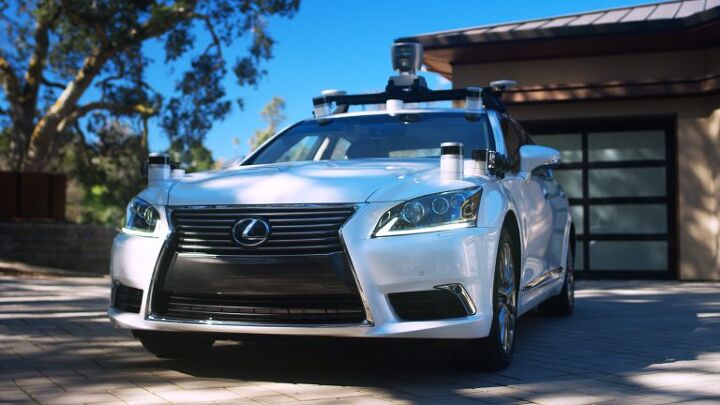

























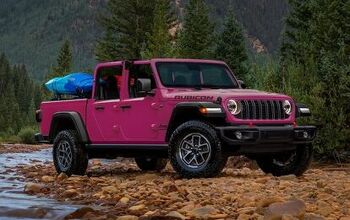
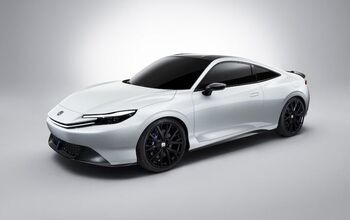

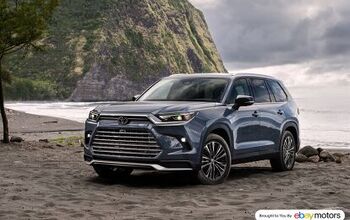
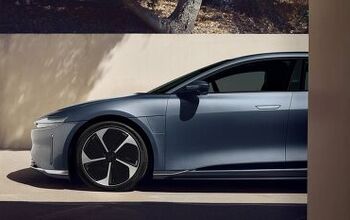
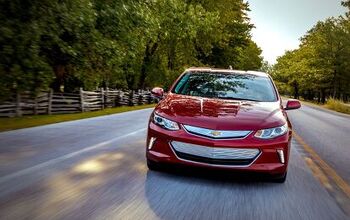
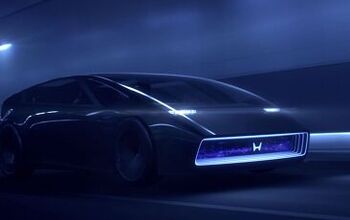
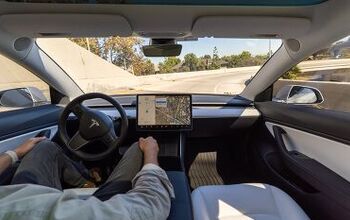

Comments
Join the conversation
I just want to know how well it will do when I come out to the car after a long day at the office and we received 6 inches of snow while it was parked. Will it have defrosters to clear all the sensors and how long will it take, or do I have to clear them myself and how well do the need to be cleaned. At least I would still be able to drive it myself. When they can operate like the GPS snow plows in Alaska at an affordable price we will be making some progress.
I guess you're just being sarcastic, but you do realise that 'level 5' is the end game - as in, the car can do everything, without any human intervention. What would level 6 even be, when a human driver is already not needed at level 5?